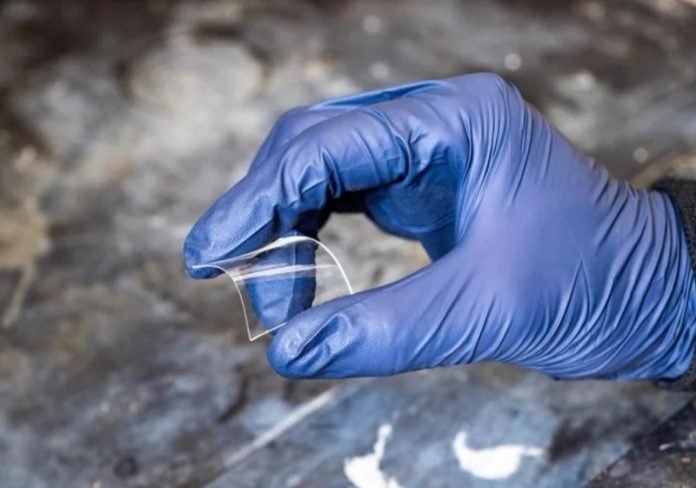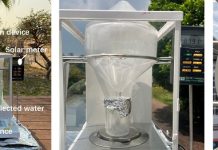
One day in the not-too-distant future, the plastics in satellites, cars, and electronics may all be living their second, 25th, or 250th lives.
New research from the University of Colorado Boulder, published in Nature Chemistry, details how a class of durable plastics widely used in the aerospace and microelectronics industries can be chemically broken down into their most basic building blocks and then formed once again into the same material.
The research was supported by the U.S. National Science Foundation.
It’s a major step in the development of repairable and fully recyclable network polymers, a particularly challenging material to recycle, as it is designed to hold its shape and integrity in extreme heat and other harsh conditions.
The study documents how this type of plastic can be perpetually broken down and remade, without sacrificing its desired physical properties.
Conventional recycling methods mechanically break down polymers into powders, burn them or use bacterial enzymes to dissolve them.
The goal is to end up with smaller pieces that can be used to make a new product — think shoes made from recycled rubber tires or clothing made from recycled plastic water bottles.
But what if recycling didn’t just offer a second life to plastics, but a repeat experience, being formed again into the same material?
That is what the researchers have accomplished. They reversed a chemical method and discovered they can both break and form chemical bonds in a high-performance polymer.
They do it by breaking the polymer — “poly” meaning “many” — back into singular monomers, a concept of reversible or dynamic chemistry.
This method has created a new class of polymer material that, like Legos, can be easily built, broken apart and rebuilt. The method can be applied to existing, especially hard-to-recycle, polymers.
The results also suggest that revisiting the chemical structures of other plastic materials could lead to similar discoveries of how to fully break down and rebuild their chemical bonds, enabling the circular production of more plastic materials in everyday life.
“The ability to repeatedly recycle plastics without loss of performance is critical for the economy and environmental sustainability,” said Siddiq Qidwai, a program director in NSF’s Division of Civil, Mechanical and Manufacturing Innovation.
“The researchers were able to make this critical advance owing to their expertise in both polymer chemistry and mechanics of materials.”



